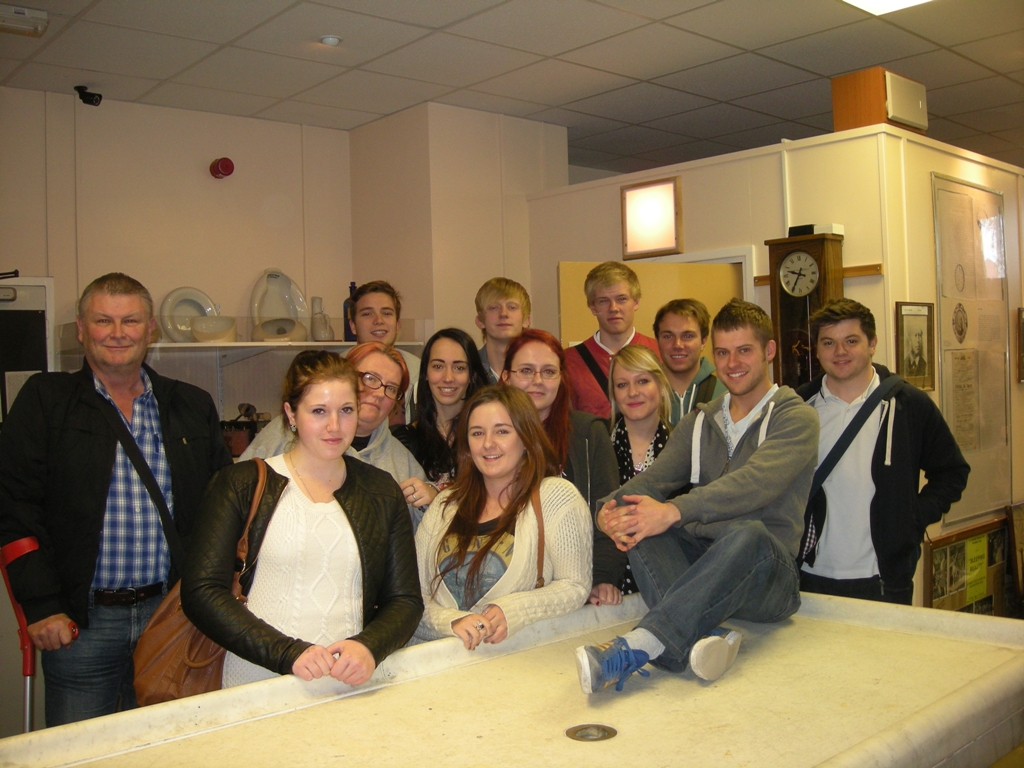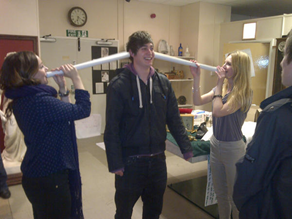The Impact of History on Mental Health Awareness

Dr Rob Ellis tells about how history plays a part in Mental Health Awareness week.
This year Mental Health Awareness week takes place between 12-18 May. As part of the programme of events that are taking part across the country, I will be giving a public lecture, hosted by West Yorkshire Archive Service (WYAS). As a historian of mental health care, I know the WYAS collections well and I am looking forward to discussing the importance and relevance of them with another new audience. The role of history in Mental Health Awareness week may, at first, not appear to be obvious but the Heritage and Stigma project has showcased just how much historians can contribute to current debates about mental health care practice.
Another good example of this is the work I did with the Mental Health Museum, which is based at Fieldhead Hospital in Wakefield. Having already been involved in some co-produced exhibitions with partners including Leeds City Museums and the Thackray Medical Museum, I was approached by Jane Pightling of South West Yorkshire Partnership NHS Foundation Trust in 2012. At that time, the museum seemed to operate under a number of names, including the Stanley Royd Museum, which was the name of the hospital where it had been originally based, and even the Stephen G. Beaumont Museum. Despite changes to curators and a move to Fieldhead, not much else had changed at the Museum since the mid 1970s when it first opened. The Museum was still staffed by volunteers, it still only opened one day a week and its historical message remained rooted in a time when large mental hospitals were ubiquitous features of the mental health care landscape. Jane, however, had a vision, and that was to use the Museum for something more than a place to store collections of curiosities relating to care in the past. The first part of that process was showing the powers that be at the NHS that the museum had a future and that meant getting schools and other groups in to take part in activities on site. My task as newly installed Visiting Research Fellow at the museum was simple – to update the historical content, to offer some interactive sessions but, significantly, to use my historical research as a jumping off point to explore issues that were still relevant today. My sessions on the history of mental health care and the representations of patients in the past complemented others including John’s discussion and tour of the (still operating) ECT suite and Patrick’s overview of Forensic Psychology. Feedback from the events, along with Jane’s case for support, was enough to convince the people at the Hospital that the museum was worth investing in and a paid, professional curator was appointed for the first time its history. Success! From my point of view, the museum project was good for a number of other reasons. Having visited the museum on several occasions as a PhD student, I was pleased that Jane offered me the opportunity to work with current practitioners and play a role in its development. This meant that I also had a chance to use my own historical research in a different way and to have an impact beyond the University sector. Finally, the project has provided opportunities for new research, including ongoing work on an article covering the historical context of the museum itself, which could not have happened without our collaboration. Since that time, the museum’s re-launch has been tasked to Cara, the new curator, and I look forward to seeing how things have changed when it reopens, also during Mental Health Awareness week.

Dr Rob Ellis tells about how history plays a part in Mental Health Awareness week.
This year Mental Health Awareness week takes place between 12-18 May. As part of the programme of events that are taking part across the country, I will be giving a public lecture, hosted by West Yorkshire Archive Service (WYAS). As a historian of mental health care, I know the WYAS collections well and I am looking forward to discussing the importance and relevance of them with another new audience. The role of history in Mental Health Awareness week may, at first, not appear to be obvious but the Heritage and Stigma project has showcased just how much historians can contribute to current debates about mental health care practice.
Another good example of this is the work I did with the Mental Health Museum, which is based at Fieldhead Hospital in Wakefield. Having already been involved in some co-produced exhibitions with partners including Leeds City Museums and the Thackray Medical Museum, I was approached by Jane Pightling of South West Yorkshire Partnership NHS Foundation Trust in 2012. At that time, the museum seemed to operate under a number of names, including the Stanley Royd Museum, which was the name of the hospital where it had been originally based, and even the Stephen G. Beaumont Museum. Despite changes to curators and a move to Fieldhead, not much else had changed at the Museum since the mid 1970s when it first opened. The Museum was still staffed by volunteers, it still only opened one day a week and its historical message remained rooted in a time when large mental hospitals were ubiquitous features of the mental health care landscape. Jane, however, had a vision, and that was to use the Museum for something more than a place to store collections of curiosities relating to care in the past. The first part of that process was showing the powers that be at the NHS that the museum had a future and that meant getting schools and other groups in to take part in activities on site. My task as newly installed Visiting Research Fellow at the museum was simple – to update the historical content, to offer some interactive sessions but, significantly, to use my historical research as a jumping off point to explore issues that were still relevant today. My sessions on the history of mental health care and the representations of patients in the past complemented others including John’s discussion and tour of the (still operating) ECT suite and Patrick’s overview of Forensic Psychology. Feedback from the events, along with Jane’s case for support, was enough to convince the people at the Hospital that the museum was worth investing in and a paid, professional curator was appointed for the first time its history. Success! From my point of view, the museum project was good for a number of other reasons. Having visited the museum on several occasions as a PhD student, I was pleased that Jane offered me the opportunity to work with current practitioners and play a role in its development. This meant that I also had a chance to use my own historical research in a different way and to have an impact beyond the University sector. Finally, the project has provided opportunities for new research, including ongoing work on an article covering the historical context of the museum itself, which could not have happened without our collaboration. Since that time, the museum’s re-launch has been tasked to Cara, the new curator, and I look forward to seeing how things have changed when it reopens, also during Mental Health Awareness week.